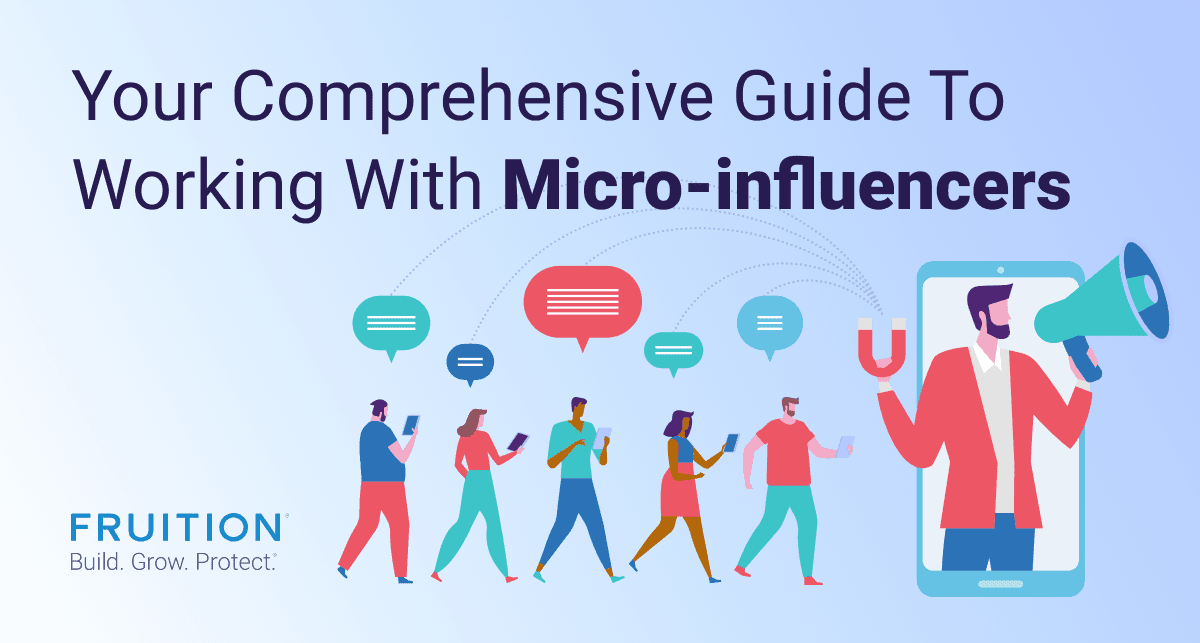How to Boost Your Brand with Micro-Influencer Partnerships

How to Boost Your Brand with Micro-Influencer Partnerships
If working with a well-known influencer is outside of your social media budget you can turn to using many micro-influencers to reach your company’s social media goals. We’ve leveraged micro influencers for many years dating back to our first social media work for FOX Studios.
What Is A Micro-influencer?
Micro-influencers have a following of less than 10,000 followers per platform. They also typically have a niche subject and audience.
What are the benefits of working with micro-influencers?
Working with smaller influencers on YouTube, Instagram, and TikTok can get you the same, if not better, results as working with a social celebrity because of their loyal and targeted following. With less than 10k followers it is more of a community than an ad platform that you’ll find with influencers that have larger platforms.One reason micro-influencer campaigns are so successful is because these types of influencers are more effective at building authentic relationships with their followers. One Adweek study found that content produced by micro-influencers is 6.7 times more effective at engaging audiences than bigger influencers. This is great news for brands, because this earned trust translates into better awareness and more engagement and clicks when compared to a big name social celebrity.
Budgeting For Micro-influencer Campaigns
Budgeting for an influencer campaigns is difficult. Influencers typically do not share their fees publicly. However, businesses do not always need to put up cash to recruit an army of influencers. Instead, businesses can send influencers free products or extend a discount in exchange for a social post or blog review. For cash payments expect to pay between $10 to $25 for every 1,000 followers an influencer has on any particular social media platform. This is confirmed by recent surveys that report 84% of micro-influencers charge $250 or less for each sponsored post on Instagram. This means that even with a small campaign budget of $2,500, your brand can work with at least 10 different influencers and easily reach 100,000 new, highly engaged potential new customers for your business .
Setting Influencer Campaign Goals
Before you begin your search for influencers, your brand needs to set clear goals and objectives. This will ultimately inform the kind of influencers you should work with, what social platforms you’ll engage on, and how you’ll collaborate. Setting broad goals, like increasing awareness or sales is not enough. You need clear goals with your influencers to establish benchmarks. For example, your SMART goal should sound something like: “At the end of 90 days, our site will see an 5% lift in traffic by collaborating with local influencers using affiliate links.”
How do you Find Micro-influencers?
The best place to start is by reaching out to influencers who are already advocates of your brand. Reach out to those loyal followers who always tag you in their posts and comment on your feed. To find influencers outside of your current following, try searching for relevant hashtags or keywords on the social platforms your brand wants to advertise on.
How To Work With Influencers?
From PR packages, gift cards, social takeovers and affiliate links, there are endless ways to collaborate with influencers. To determine what kind of strategy is best for your business, you will need to consider goals, budget, and resources for the entirety of the campaign. Remember that the more complex your campaign is, the more time and money your band will need to spend. It is generally recommended to keep it simple, especially if your business is new to the influencer game. For example, if you have a physical product like chocolate, clothing or makeup, send a small set of influencers a beautiful PR package with your product and a bit about your brand. If you’re a local business like a chiropractor, gym, or coffee shop, extend a special discount for your service in exchange for a post.
Micro-Influencer Considerations
Always keep in mind that micro-influencers are so valuable because of the trust they have earned from their fans. While it is great for your brand to offer some key talking points or points of purchase, it’s very obvious and alienating when brands force their voice on influencers. In a recent, not super scientific study, 12% of influencers reported that they have little to no control over the creative copy for a brand’s sponsored post. Giving influencers creative freedom helps them build trust with their fans, which in turn helps your brand win more customers and ensures the highest level of success for your campaign. Another item to keep in mind when working with influencers is transparency. Companies are responsible for informing collaborators of the FTC guidelines on how to properly disclose ads. Remember that many of these influencers are new to collaborating with brands too, so it’s important to work as a team to ensure you’re both following and abiding by the social platform’s terms and conditions. As a general rule, influencers need to have “simple and clear” disclosures. For example, this means using the hashtag #ad at the beginning of an Instagram caption or starting a YouTube video with the disclosure. Finally, remember you are reaching out to real people who have their own personal brand and motivations to consider when choosing to work with brands. Some influencers may provide reasons for saying “no” to your brand, and some may not. It’s totally normal for some influencers to decline your offer - just keep reaching out to other influencers in your space. However, if enough influencers are declining your proposal, it might be time to reconsider how you’re approaching influencers or what you’re offering them.
Measuring Influencer Campaign Results
The way you measure the results and success of an Influencer Campaign will depend on your brand’s goals for the campaign. However, the most commonly tracked Key Performance Indicators (KPIs) include a mix of Reach (followers, engagement rate, impressions, traffic), Engagement (clicks, likes, reactions, shares and retweets, comments, mentions) and Sales (business performance, tracking and conversion rate). There are a few ways to collect and record this data manually. Your business can simply ask the influencer to share their reach and engagement information with you after a certain amount of time has passed since the post went live. Alternatively, you can also track success by using affiliate links, promo codes, or UTMS when collaborating. This makes calculating ROI significantly easier because everything can be neatly pulled in from a Sales Report or Google Analytics dashboard. For an easier, more automated solution, consider looking into an Influencer Campaign Management tool. There are a plethora of options that will track and format all your KPIs into a nicely organized report, which cuts down on manual labor and guesswork. Many even offer free demos or trials to help ensure you are using the best tool to fit your marketing objectives and campaign needs. Partnering with influencers is a great way to help your brand engage more people, build brand loyalty, and land more sales. There is a lot to consider when planning an influencer outreach program, but the return on investment can be high, especially when working with several micro-influencers. If you are interested in working with micro-influencers, contact us. Our Social Media team can help you form a sound outreach strategy that will give you the best possible results. Let’s get a microinfluencer campaign going for you today.
References on micro influencer data
- Micro influencer pay
- best practices
- study on control of brand messaging





